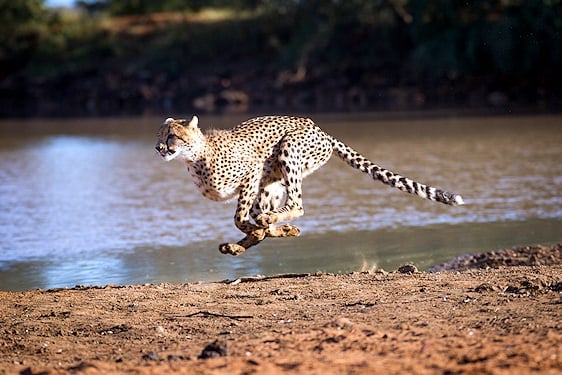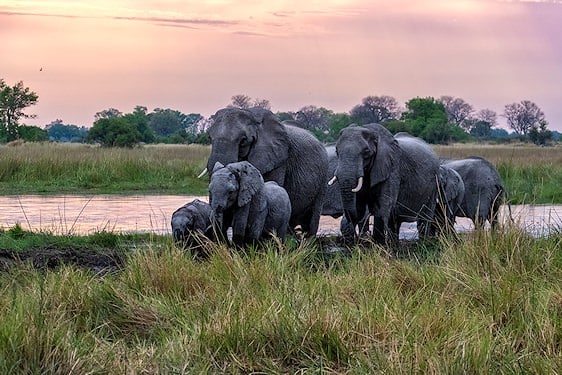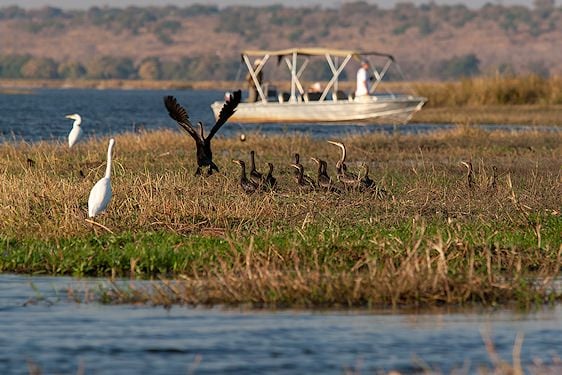- Home
- >
- African Travel
- >
- South Africa
- >
- National Parks
- >
- Kruger National Park
- >
- Mammals
- >
- Side-striped Jackal
Description
The side-striped jackal is a medium-sized canid with grizzled gray-buff fur, a subtle pale stripe along each flank, and a darker saddle than the black-backed jackal. It favors woodland and scrub mosaics with nearby open patches for foraging. Mostly nocturnal and elusive, it feeds opportunistically on insects, fruits, carrion, and small vertebrates.

Side-striped jackal occur from northern South Africa through Mozambique, parts of Botswana and Zimbabwe, and into northern Namibia near the Angolan border. In Kruger National Park they are widespread but less frequently seen than the black-backed jackal, reflecting their nocturnal habits and preference for denser cover. Regional occurrence often tracks woodland, thicket, and ecotone habitats with access to varied food.

Status
Globally, the side-striped jackal is listed as Least Concern with a wide African distribution. In South Africa, it is also Least Concern and appears stable or increasing locally, including parts of the Lowveld. Sightings in Kruger are relatively uncommon compared with the black-backed jackal, largely due to habitat preference and nocturnal activity patterns rather than scarcity.

Habitat
This jackal favors woodland, scrub, and savanna mosaics, including miombo regions, and often forages along edges near open ground or wetlands. An omnivore, it feeds on insects, wild fruits, small mammals, carrion, and occasionally small antelope. Termites and grasshoppers can be important seasonal foods, highlighting its flexibility in landscapes shaped by rainfall and human activity.

Social Organization
Side-striped jackal typically form long-term pairs that share a territory, sometimes accompanied by dependent young. Family groups may number several individuals, with cooperative behaviors around den sites and foraging areas. Territories vary with habitat quality and food availability, and neighboring groups avoid conflict primarily through spacing, vocal advertisement, and scent marking at boundaries.
Finest Safari Areas in Africa for Encountering Side-striped Jackal
We recommend the following National Parks and Private Reserves for the best chances of spotting the side-striped jackal on safari game drives and bush walks.

Social Behavior
Primarily nocturnal and crepuscular, side-striped jackal communicate with hoots, howls, and a range of contact calls. Scent glands and urine mark paths and boundaries, conveying information about identity and reproductive status. Families sometimes forage together and provision offspring, while distress calls and aggressive displays help deter intruders and manage risk around dens and food resources.

Reproduction
Breeding typically occurs from June to November in southern Africa. Pairs den in concealed sites, and gestation lasts roughly 57–70 days. Litters commonly number three to six pups. Young remain at the den for several weeks and may be provisioned by both adults, gradually transitioning to foraging with the family group as they mature.

Anti-Predator Behavior
Major threats include lion, leopard, hyena, and African wild dog. Side-striped jackal reduce risk by using dense cover, vigilant scanning, and evasive flight. Adults defend den areas with alarm calls and mobbing displays, and they shift activity to quieter periods to avoid encounters with larger predators on shared pathways and carcasses.












